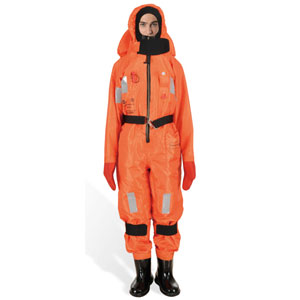
RSF-I Immersion Suit
Design: inherently buoyancy, can be used without life jacket. There is a pillow behind that can keep head over water.
Comply with SOLAS Standard
Material: Polyester with TPU coated + PE
- Accessories: Life jacket light, whistle,stainless steel harness
Size: S/M/L/XL
Certificates: EC/CCS/ZY
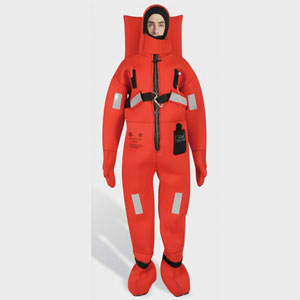
RSF-II Survival Suit
Design: inherently buoyancy, can be used without life jacket. There is a pillow behind that can keep head over water.
Comply with SOLAS Standard
Material: CR expanded neoprene composite cloth
- Accessories: Life jacket light, whistle,stainless steel harness
Size: S/M/L/XL
Certificates: EC/CCS/ZY
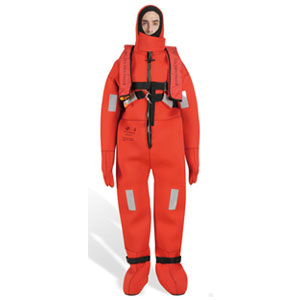
RSF-III Immersion Suit
Design: inherently buoyancy, must be worn with life jacket.
Comply with SOLAS Standard
Material: CR expanded neoprene composite cloth
- Accessories: Life jacket light, whistle,stainless steel harness
Size: S/M/L/XL
Certificates: EC
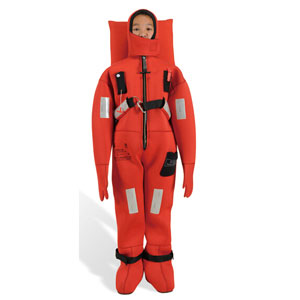
Child Immersion Suit
Design: inherently buoyancy, must be worn with life jacket.
There is a pillow behind that can keep head over water.
Material: CR expanded neoprene composite cloth
- Accessories: Life jacket light, whistle,stainless steel harness
- Size: Suitable for height from 150 to 165 cm
REQUEST A QUOTE NOW
Immersion Suit – The Ultimate FAQ Guide
Welcome to the FAQs Guideline page of Immersion Suit. This article will answer all your queries related to the Immersion suit.
In today’s feature, you will be able to learn about the use, kinds, specifications, and many other things you want to know about Immersion Suit.
Let’s start!
1. What is an Immersion Suit?
An immersion suit is a protective suit used to protect crew members from hypothermia in the cold water or any miseries or any emergencies occurring in high seas. That is why it’s also known as a rescue suit.
The first immersion suit was known in 1930 when a New York firm, American Life Corporation, proposed fishing firms the Immersion Suits as their safety suits for crew members.
This suit allows a high jump of no less than 4.5 meters into the water without fear of being injured or damaging the immersion suit.
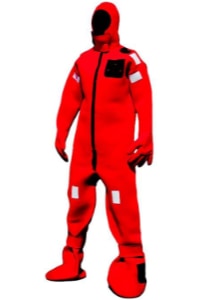
Figure 1 Immersion suit
An immersion suit is made up of neoprene, a type of rubber and entirely waterproof and can bear any temperature that could be high or low.
Moreover, an immersion suit covers the wearer’s whole body but the face, which is covered with a neoprene face cover and a neoprene face seal.
2. What Are The Uses Of Immersion Suits?
There are various uses of Immersion suits. These uses are as follows:
- Immersion suits are designed to keep the wearer mild and safe from hypothermia in freezing water.
- The seams in the immersion suits are all cornered and 100 percent waterproof so that no water enters or passes through the immersion suit.
- To keep the body heat stable in the immersion suit, the inner surface of the suit is laminated with a metallic sheet.
- There is a long zip in an immersion suit used to put on a mother and child to contain them at one time.
- The immersion suit is light in weight and easy to carry in high seas.
- Immersion suits extend the wearer’s duration in cold waters. It’s life-saving equipment for all fishermen.
3. What Are The Advantages Of Immersion Suits?
There are many advantages of an immersion suit; some of them are given below:
- An immersion suit helps to maintain the body heat for rescuing someone from the water.
- Immersion suits are mapped out to rescue the crew members from death due to the uncovering and hypothermia type problems.
- Immersion suits cover all the body and its magnitude to withhold water from entering into the immersion suit.
- Immersion suits mainly reduce the severity of cold blows.
All the three layers of immersion suit have their advantages, like:
- The inner layer of the immersion suit is made up of microfiber that keeps air in it to provide protection against the cold.
- The next after inner layer is a layer containing bubble-like film for waterproofing.
- The last layer, or the outer layer, which is also called a nylon layer, opposes damage and retard fire.
4. What Are The Features Of A Good Immersion Suits?
An immersion suit is called a good Immersion Suit if it contains the following features:
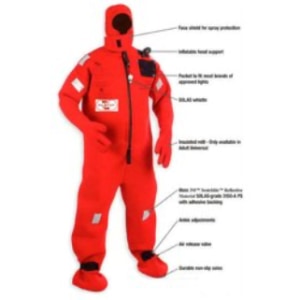
Figure 2: A good Immersion Suit
- The Immersion Suit can be Insulated and non-insulated and is wearable with a life jacket.
- An immersion suit should contain a layer in the suit, which would cause water resistance.
- Immersion suits should be World Wide Red in a highly visible color.
- A good immersion suit should be unblocked and get dressed within a time limit of 2 minutes without any outward help or relief.
- The person should be capable of a leap from a height of at least 4.5 meters in the water.
- The immersion suit should be capable of covering the whole body except the face.
- The retro-reflective binding must be suitable in immersion suits.
- After wearing an immersion suit, ordinary work should be allowed to be fulfilled by the crew members.
- The crew members must jump and go down a vertical ladder of at least 5 meters of length.
5. How Long Is The Survival Time In An Immersion Suit?
A new type of immersion suit adds 19 hours in an already existing IMO stipulated 6 hours of survival time in an immersion suit.
The survival time also includes 2 minutes put on time, full protection for more than 4.5 meters, mainly hypothermia safety for more than 6 hours, and to oppose flame for more than 2 seconds.
6. How Do You Wear An Immersion Suit?
Following are the instructions for how to wear an immersion suit:

Figure 3: How to wear an Immersion Suit
Step 1: Turn over and over the suit out an ornament and sit on it. Put your legs in a suit, use plastic bags to make it less complicated. Rinse off the boots and other clothes for cover and protection in the water.
Step 2: Put your non-dominating arm into the immersion suit first. Drag the hood of the immersion suit over your head with loose hands.
Step 3: Put your dominating arm at last into the immersion suit. Drag the zipper of the immersion suit up with care and cover your face properly with it.
Step 4: Ensure that all the tape and piping are safe to keep away from being ripped or injured. Do not raise the air bladder as late as you are in the water.
7. How Does An Immersion Suit Work?
An immersion suit is also called a rescue suit because of the three layers, which are mainly used to rescue crew members.
Immersion suits are formed to lessen the fear of some hazards like drowning and cold water.
- Immersion suit works for the wearer to prevent him from going into a state of hypothermia.
- This suit prevents the member from cold water as it is made up of rubber sheeting.
- The immersion suit has three layers, inner layer, middle layer, and outer layer, worked accordingly to keep the air in it to secure against the cold, contain bubble-like film for waterproofing and oppose damage, and retard fire, respectively.
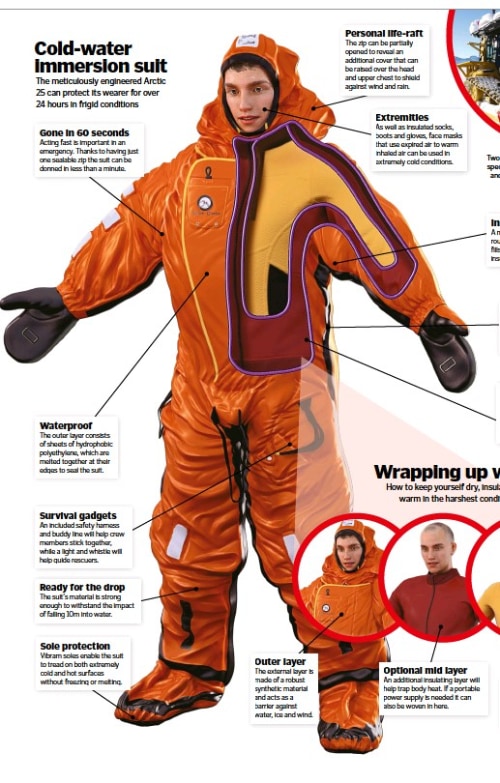
Figure 4: Working of different layers of Immersion Suit
8. What Is The Construction Of An Immersion Suit?
An immersion suit or rescue suit is blocked out in two main colors, Red and Orange. Both red and orange colors are kept blazing.
The vibrant colors of the immersion suit can captivate the observation of paramedics or rescue help instantly.
The construction of the immersion suit is:
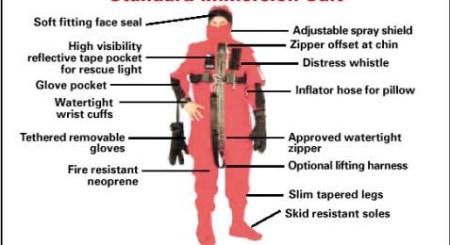
Figure 5: Construction of an Immersion Suit
- The hood part of the immersion suit is made up of soft fitting face cover.
- At different parts of the suit, an immersion suit has a high clarity pensive tape pocket for the rescue light.
- At the hands’ area, the immersion suit contains fast demountable gloves.
- The suit is made up of flameproof neoprene.
- The immersion suit consists of a modified spray shield.
- At the chest area, an immersion suit contains a loud whistle.
- The immersion suit has an optional fitting harness.
- From the legs side, the immersion suit is slim or narrow.
- From the foot area, the immersion suit is made up of skid resistance soles.
9. What Are The Testing Requirements For An Immersion Suit?
There are different administration states that the layer and termination of immersion suits experience collapse over time.
The rate and seriousness may occur widely depending upon the distinct components and procedures working in the manufacturing of the immersion suits and all the conditions in which the immersion suit is set aside.
However, under consummate conditions, the material and adhesive used have a limited life service and will automatically experience a reduction in strength or loss of water resistance with time.
To ensure the preservation of sufficient strength and water resistance of seams and shutting down of immersion suits and anti-exposure suits with age, each suit must be exposed to an air pressure test at intervals.
10. Do Immersion Suits Have An Expiration Date?
At present, immersion suits do not have an expiration date. The life of the immersion suit is conditional on a lot of its care.
But the immersion suits are much older than 10 or 12 years and must be examined very hypercritically.
Suits that are 20 or more years old are far away from their service life.
Immersion suits don’t have any expiry date as they practiced it by putting the suit within 60 seconds during monthly emergency instructions.
11. How Much Immersion Suits Are Required On A Boat?
The amount of immersion suits on a boat depends upon the owners and operators to decide how much immersion suits would be enough for the safety and operational needs of the members in the boat.
For boats, the number of immersion suits should be greater than the actual number of crew members present in a boat.
Moreover, the children present on the boat are not supposed to participate in the swimming activities.
If there is any case that a child is participating, then the owner should ensure that how to adjust that children in someone’s immersion suit because commonly there are no immersion suits in boats for children.
Moreover, each person present on the boat should have an immersion suit of their size, which perfectly fits their body, and extra immersion suits present for the watch-keepers on the boat.
12. What Are The Colours Of An Immersion Suit?
An Immersion Suit is mainly designed in two highlighted colors, Red and Orange. They both are bright and highlighted colors.
The reason for choosing these colors is that they can attract the rescue aid’s attention instantly in times of emergency.
They are internationally Red, which is so bright and visible. Moreover, other LSA equipment is bright orange.
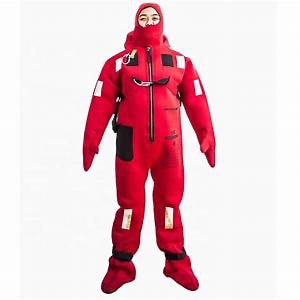
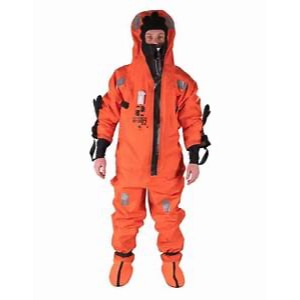
Figure 6: Both two colors of Immersion Suits
13. What Are The Types Of An Immersion Suit?
There are three types of immersion suits; all three of them are given below:
Type 1
The first type of immersion suit is a survival suit is a commodity that is worn out by fishermen who fish in extremely cold temperatures.
These fishermen keep wearing the immersion suit endlessly to ensure that their bodies do not drop the heat and are kept continuously warm and wrapped.
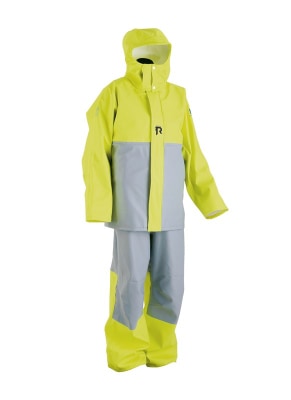
Figure 7: Fishermen Immersion Suit
Type 2
The Second type of immersion suit is the one that is kept on all ships and boats.
It is mandatory; without it, workers cannot be anticipated to work on the ship or oil rigs. Only during difficult situations, such immersion suits are worn by the workers.
Type 3
The last type of immersion suit is the Inflatable Immersion Suit. The inflatable immersion suit does not fully cover the person’s body.
The inflated suit only covers a person’s legs and hands, keeping the person swimming and safety in critical situations. Because of the immersion suit’s prolixity, the suit is easier to carry and for transportation purposes than the previous two types.
The immersion suits are also made with an emergency torch, a whistle, and a tagline attached to the suit of the rescued person. This is also known as the buddy line, which ensures that all the persons are together and no person gets lost in the water.
14. What Is the Donning Time of An Immersion Suit?
The donning time completely depends upon the crew member how quickly he puts on his immersion suit and saves himself from an emergency.
It is better to practice donning before any type of such activity. If a member is giving a good practice time, then he could lessen his donning time from minutes to seconds. The donning practice includes:
- Get the immersion suit out from the storage bag.
- Put the weaker arm into the immersion suit first. Drag the hood of the immersion suit over your head with loose hands.
- Put your free arm at last into the immersion suit. Drag the zipper of the immersion suit up with care and cover your face properly with it.
- Make sure that all the tape and piping are safe to keep away from being ripped or injured. Do not raise the air bladder as late as you are in the water.
If a crew member practiced it well, then the donning time of an immersion suit would be 60 seconds or less than that.
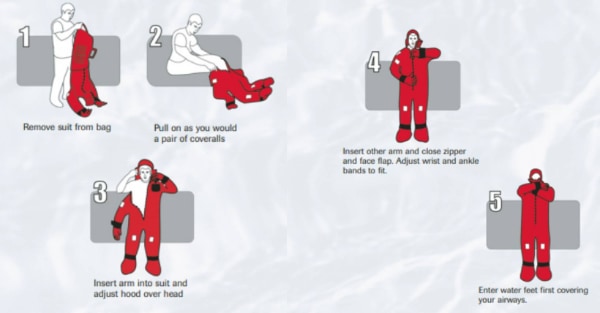
Figure 8: Donning time of an Immersion Suit
15. What Are The Additional Components Of Immersion Suits?
The additional components of an Immersion Suit are:
- a support ring/ locking ring,
- a reflective tape,
- a whistle for audio fiction, and
- a marker light with an unexpired battery.
16. What Are the SOLAS Requirements of The Immersion Suits?
The SOLAS requirements of the Immersion Suit are given below:
- An immersion suit is composed of a substance that has no intrinsic packing.
- It must be covered in affable co-existence clothing; it gives heat protection, i.e., the survivor’s body temperature doesn’t fall more than 2 degrees Celsius for a duration of 1-hour in quiet flowing water at a temperature of 5 degrees Celsius.
- It is permitted to float a short distance from end to end of the water and timber a crew member works.
- An immersion suit should be unpacked and get dressed within 2 minutes without any outward help or relief.
- The person should be capable of jumping from a height of at least 4.5 meters in the water.
- The immersion suit should be capable of covering the whole body. Only the face remains uncovered.
- The retro-reflective binding is suitable in immersion suits.
- After wearing an immersion suit, it should easy to fulfill routine work by the crew members like jumping and going down a vertical ladder of at least 5 meters of length.
17. How Often Do Immersion Suits Need to Be Inspected?
An Immersion Suit can be inspected at any time, and it doesn’t matter if you buy it just now or are using it for a year. It’s a good practice to inspect your Immersion suit so that it’s always ready-to-wear in an emergency.
The things included in the inspection of the Immersion suit are its size, style, features, air bladders, light-reflective tape, zipper, zipper lanyard, whistle, light, suit material, inner liner, face flap, air valves, storage bag, and its age.
18. What Are the Maintenance Instructions for Immersion Suits?
The maintenance instructions for the immersion suit are given below:
- Accepted care and preservation of immersion suits will increase their life (and yours too). Immersion suit checking must include suit stuff, buckles for fastening, and inflation pipes.
- Look for any damages and cuts. Immersion Suits used in salty water or puddles must be washed completely from outside and inside with clear lukewarm water.
- Keep away from direct sunlight and dry it while turning the suit inside out. Grease and oil must be cleared from the immersion suit with soft soap.
- Check all the zippers for smooth working. Make the zippers smooth with a non-petroleum type product like canning paraffin, beeswax, or the substance suggested by the manufacturer.
- The air bladderhelps to prop up the head and lift it out of the water. It also offers buoyancy. So maintenance of air bladder is very necessary.
19. How to Store an Immersion Suit?
The simplest way to store an immersion suit is as follows:
- Place your immersion suit on the floor with the open zipper,
- Twist the suit up from the middle to the top,
- Roll up the arms and the immersion suit,
- Finally, insert it into the storage bag.
Safe the immersion suit in the dry and best airy place; the storage area must be easily accessible.
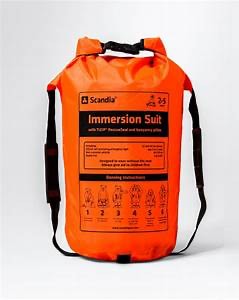
Figure 9: Store bag for an Immersion Suit
20. What Is A Cold-Water Immersion Suit?
The immersion suits are mapped out to help keep those on board from cold water with 5-mm, willowy, slowness neoprene.
Besides, inflatable head assists face support. Five fingered united gloves offer extra protection from hypothermia. As a result, they allow the wearer to move comfortably.
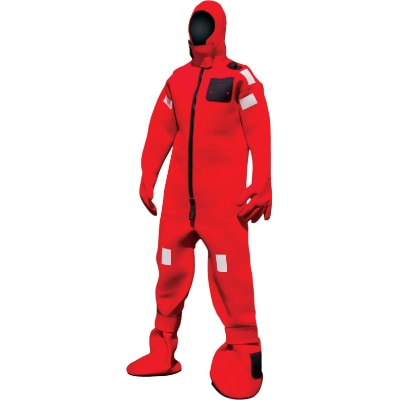
Figure 10: Coldwater Immersion Suit
21. What Are the Fits Available for Immersion Suit?
The fits that are available for an immersion suit are:
- Survival suits that are worn by fishermen, who fish in extremely cold temperatures
- Immersion suit that is kept on all ships and boats. It is mandatory; without it, workers are not allowed to work on the ship or oil rigs.
- Inflatable Immersion Suit. This immersion suit does not cover the person’s body completely.
22. What Is the Price of An Immersion Suit?
There are different prices for different immersion suits. Some of the prices are:
- The price of a cold-water immersion suit ranges from $324.39.
- The price of a survival immersion suit ranges from $268.30.
- The price of an inflated immersion suit ranges from $346.39.
23. What Is the Pressure Test of An Immersion Suit?
The pressure test of an immersion suit can be conducted by fully zipping up the zipper. Close the face flap. The suit should then be inflated to a pressure of 0.7 to 1.4 Kpa.
It is recommended to ensure the maintenance of adequate strength and water tightness of seams. With frequent use, it is recommended that each immersion suit shall go through an air pressure test.
Intervals between tests must not exceed three years. For suits, over ten years of age must go through an air pressure test more frequently.
24. What Are the Manufacturers of Immersion Suit?
The Immersion suit manufacturers are those who make them or design them in the way that the person or wearer could use the immersion suit in time of emergencies or prevent himself from different water temperatures.
25. What is the HS Code for Immersion Suit?
The full form of the term HS code is the Harmonized System code. It’s a multi-tasking code used to arrange goods.
Immersion suits have different HS codes for export and import. They are:
HS codes used for Immersion Suit- Import
| HS Code | Description | No. of Shipments |
| 4015 | Clothing accessories | |
| 40159099 | Other | 2 |
| 6307 | Others Include dress patterns | |
| 63072090 | Other | 4 |
HS code use for Immersion Suit- Export
| HS Code | Description | No. of Shipments |
| 9026 | Measure or check the flow, level, pressure, and other variables of liquid or gas | |
| 90269000 | Accessories | 1 |
| 4911 | Other matters | |
| 49119990 | Other | 4 |
| 6211 | Tracksuits | |
| 62114990 | Other | 1 |
26. What is an Inflatable Immersion Suit?
The unique type of survival suit is the inflatable immersion suit. Inflatable immersion suits are recently manufactured.
Its buoyancy stops the wearer from sinking. It helps to keep them floating face up. The immersion suit is waterproof. It shields the wearer from cold water-body contact.
Furthermore, it is insulated to offer protection from fire. It’s recommended to wear it before inflation.
Once the inflatable immersion suit has been put on, the wearer activates firing handles on compressed carbon dioxide cartridges.
It punctures the cartridges and rapidly inflates the suit. This results in a highly buoyant and rigid shape suit. It also offers very high thermal retention properties.
Like the inflatable boat, the inflatable immersion suit also possesses all precautionary properties. The suit has two or more vesicles in case it is ruptured, and the gas is discharged, another vesicle is available to be used.
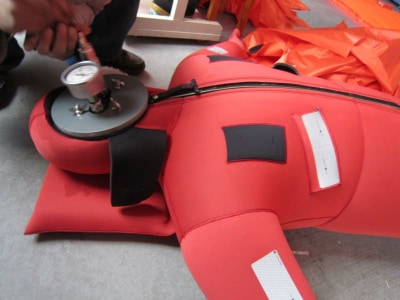
Figure 11: Inflatable Immersion Suit
27. What Is A Military Immersion Suit?
Military Immersion Suits are for the military members. They are designed for the member’s ease so that he could self-aid himself until the rescue team arrives.
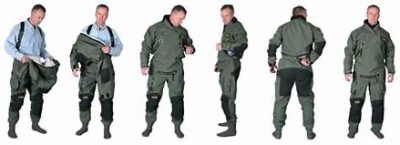
Figure 12: Military Immersion Suit
28. What Is the Difference Between Thermal-Aid and Immersion Suit?
Thermal aid is an aluminized polyethylene suit with joints. It protects the body from a temperature range of -30 degrees to 20 degrees.
It protects the wearer’s body from extreme temperatures. The thermal aid has a worldwide red color to ensure that the crew member is highly visible in all weather conditions.
The support must not be used in water and is not recommended for swimming.
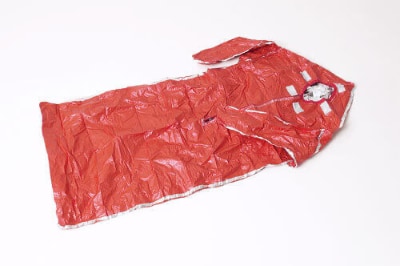
Figure 13 Thermal-Aid
Immersion suits or survival suits can remarkably improve survival time in cold water.
It is a unique type of water-resistant dry suit that secures a person from cold water.
Due to its comfortable making, it helps to swim in the water.
It is efficiently known that a person’s chances of survival when in water are refined only by remaining dry and maintaining the body temperature at a pleasant level.
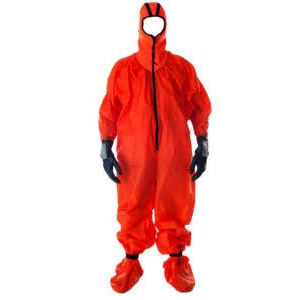
Figure 14 Immersion Suit
